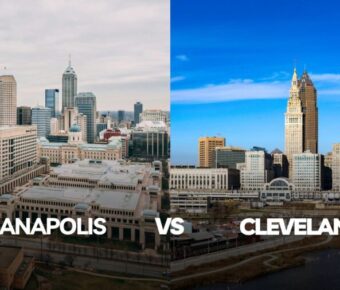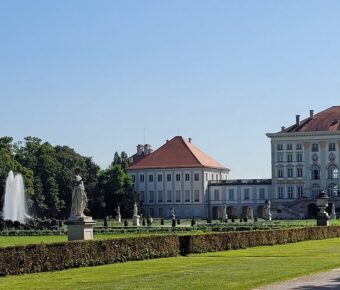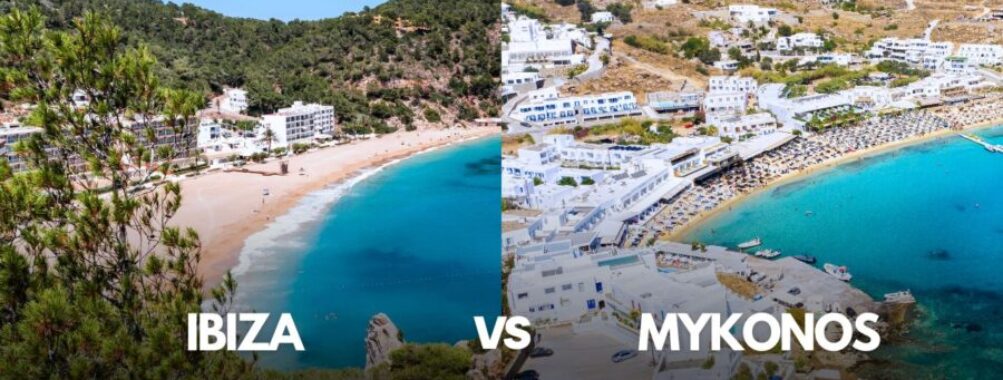
Ibiza vs Mykonos: 7 Key Differences to Know Before Booking Your Mediterranean Island Getaway
Planning a Mediterranean getaway and torn between Ibiza and Mykonos? These two islands are often compared for their famous party scenes, but offer distinctly different experiences.
Ibiza and Mykonos both feature stunning beaches with crystal-clear waters. However, some travelers describe Mykonos’ beaches as having the bluest waters they’ve ever seen. While Ibiza boasts a greener landscape and larger territory, Mykonos charms visitors with its barren terrain dotted with large boulders, creating a unique island aesthetic.
The nightlife also sets these destinations apart. Ibiza is renowned for its massive clubs, steep cover charges, and expensive drinks, making it the ultimate destination for serious clubbers.
Though lively, Mykonos offers a more intimate experience with smaller bars that visitors can hop between throughout the evening. This difference in atmosphere might be the deciding factor for travelers choosing between these Mediterranean gems.
Table of Contents
- Geographical Overview
- Location and Accessibility
- Climate and Best Time to Visit
- Cultural Significance
- Historical Background
- Modern Cultural Scene
- Accommodation Options
- Luxury Hotels and Resorts
- Budget-Friendly Stays
- Private Villas and Rentals
- Beaches and Natural Beauty
- Ibiza’s Secluded Bays
- Mykonos’ Famous Beach Parties
- Natural Attractions and Activities
- Nightlife and Entertainment
- World-Class Clubs and DJs
- Local Festivals and Events
- Bar and Restaurant Scene
- Cuisine and Dining Experiences
- Local Delicacies and Dishes
- Fine Dining and Gourmet Restaurants
- Food Markets and Street Eats
- Traveling and Transportation
- Local Transit Options
- Car and Scooter Rentals
- Private Jet and Yacht Services
- Frequently Asked Questions
- Which island is better for a couple’s getaway, Ibiza or Mykonos?
- How does the cost of living compare between Ibiza and Mykonos?
- Can you rank Ibiza, Mykonos, and St Tropez in terms of tourist expenses?
- Apart from Ibiza, which Greek islands offer a vibrant party scene similar to Mykonos?
- How do Ibiza and Mykonos differ in size and variety of attractions?
- How do the nightlife and social scenes in Ibiza compare to those in Mykonos?
- Book Your Dream Experience
- More Travel Guides
Geographical Overview

Ibiza and Mykonos offer stunning Mediterranean landscapes but differ significantly in their geographical features, accessibility, and climate patterns. These differences shape the unique experience visitors can expect on each island.
Location and Accessibility
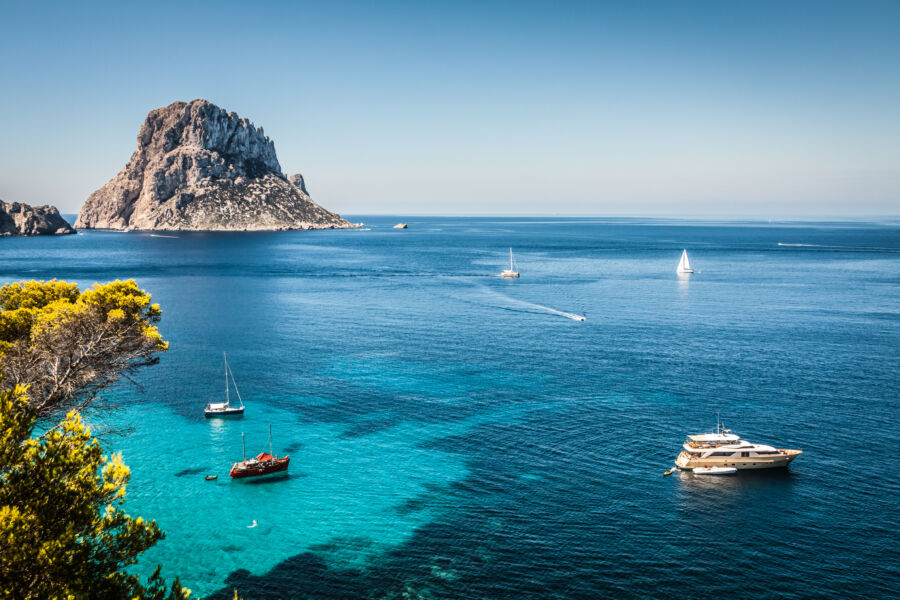
Ibiza is one of Spain’s Balearic Islands, located about 93 miles off the eastern coast of mainland Spain in the Mediterranean Sea. The island covers roughly 221 square miles, significantly larger than Mykonos. Most travelers reach Ibiza via its international airport, which handles direct flights from major European cities, especially during summer.
Conversely, Mykonos is part of Greece’s Cyclades island group in the Aegean Sea. At just 33 square miles, it’s much more compact than Ibiza.
The island sits about 94 miles east of Athens. Visitors typically arrive by plane at Mykonos International Airport or by ferry from Athens’ ports of Piraeus or Rafina. The ferry journey takes 2-5 hours, depending on the type of boat.
Both islands feature distinctive whitewashed architecture, but Ibiza’s northern region has a more varied landscape with rolling hills, farmland, and pine forests.
Climate and Best Time to Visit
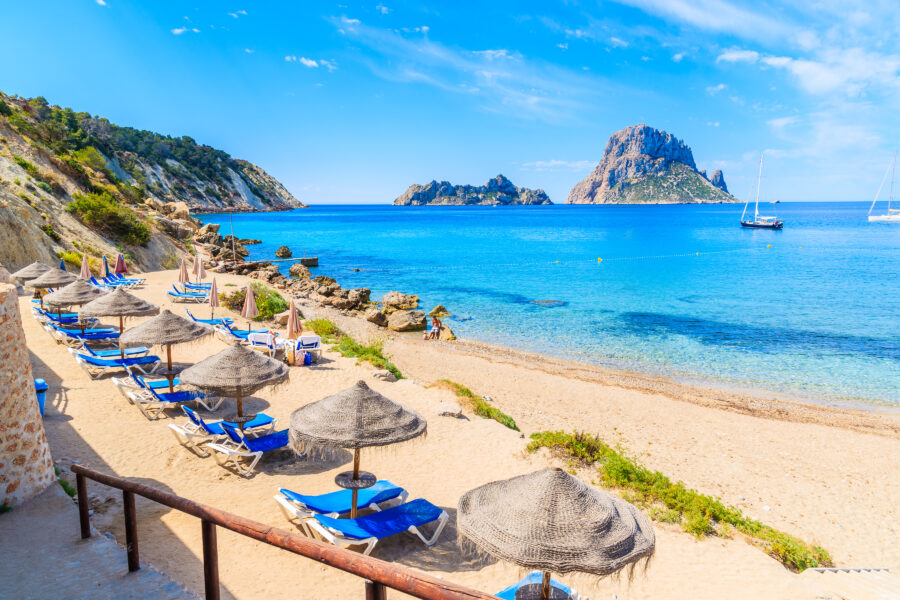
Ibiza enjoys a classic Mediterranean climate with hot, dry summers and mild, slightly rainy winters. Summer temperatures typically range from 77-86°F (25-30°C), while winter sees averages of 55-60°F (13-16°C).
The tourist season runs from May through October, with peak crowds in July and August. Consider visiting in June or September for a more balanced experience with good weather but fewer crowds.
Mykonos has a similar climate but tends to be windier due to the famous “meltemi” winds that blow through the Cyclades in summer. These winds can provide welcome relief from the heat but occasionally affect boat schedules.
The island’s tourist season is slightly shorter than Ibiza’s, from mid-May to early October. Temperatures in summer hover around 82°F (28°C), dropping to about 50°F (10°C) in winter months.
Cultural Significance
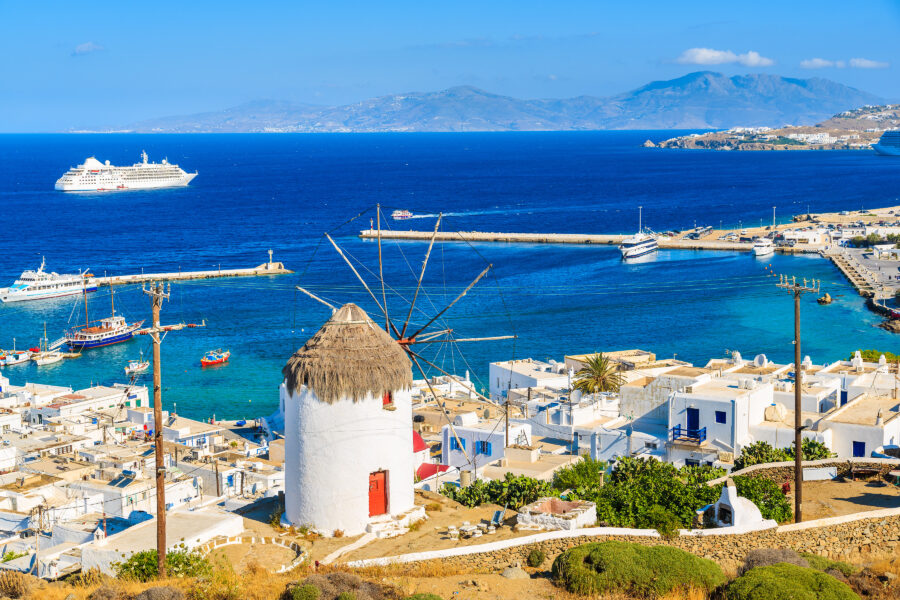
Ibiza and Mykonos carry rich cultural tapestries far beyond their reputations as party destinations. These Mediterranean gems have centuries of history and vibrant modern cultural scenes that shape their unique identities today.
Historical Background
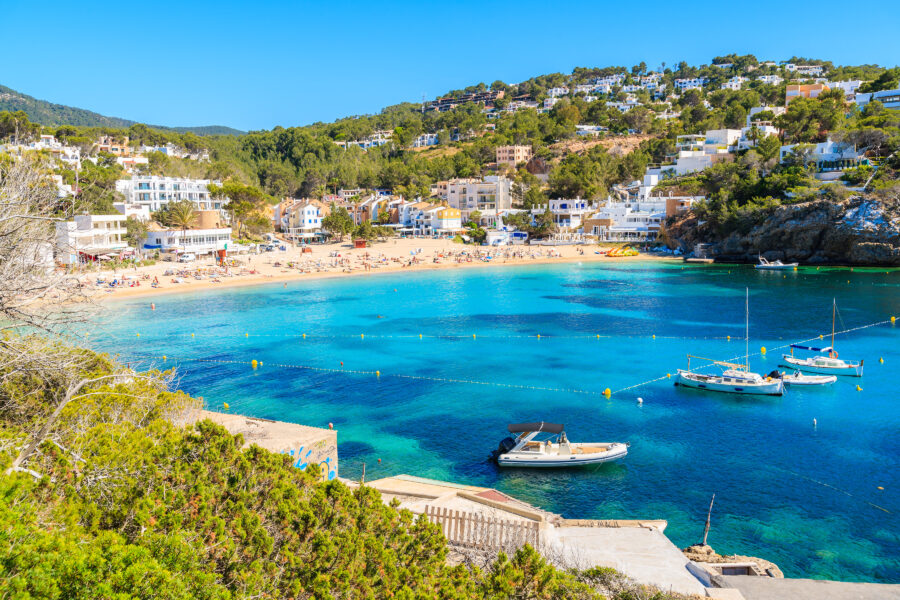
Ibiza boasts an impressive multilayered history that’s visible throughout the island. The Phoenicians, Carthaginians, Romans, and Moors left their mark here, creating a fascinating cultural melting pot. Dalt Vila, Ibiza’s UNESCO-protected old town, features impressive Renaissance fortifications and winding medieval streets that tell the island’s story.
Mykonos has a distinctly Greek heritage, with its iconic windmills representing the island’s history. Initially built by Venetians in the 16th century, these structures once powered grain mills vital to the island’s economy.
The charming neighborhood of Little Venice reflects the maritime influences that shaped Mykonos through centuries of trade. The cultural differences stem from their geographic positions—Ibiza in Spain’s Balearic Islands and Mykonos in the Greek Cyclades—which give each unique architectural styles, cuisines, and traditions.
Modern Cultural Scene
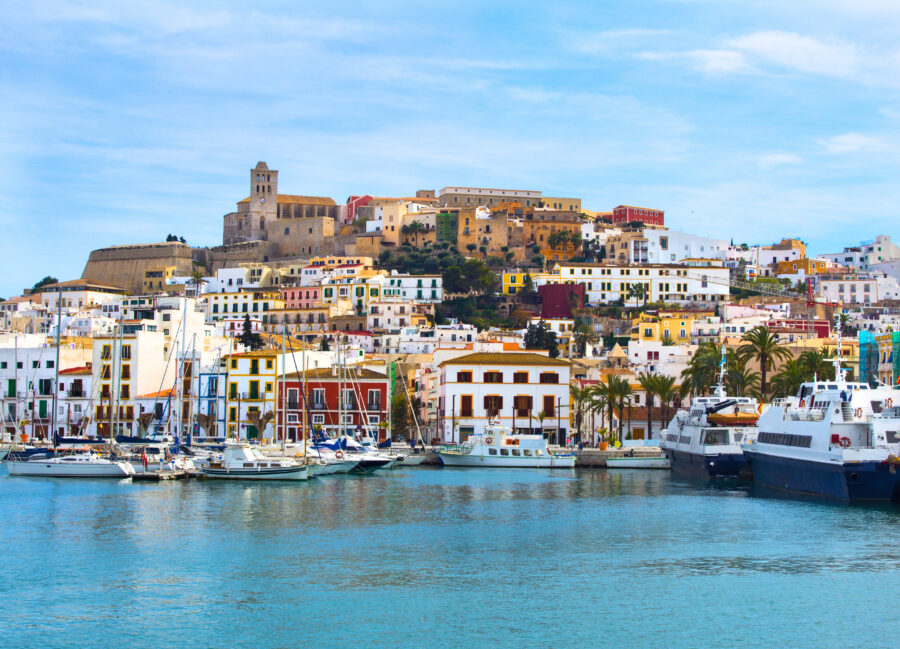
Ibiza’s cultural identity today extends beyond its clubs to embrace a bohemian, artistic spirit. In the 1960s, the island became a haven for creatives and free-thinkers, attracting artists, musicians, and hippies seeking an alternative lifestyle. This legacy lives on in the island’s vibrant art galleries, craft markets, and music scene, celebrating more than electronic beats.
Mykonos embraces both traditional Greek culture and cosmopolitan influences. The island perfectly balances preserving authentic Greek traditions through festivals, dance, and cuisine while welcoming international artistic expressions.
The famous white-washed buildings with blue accents create a striking backdrop for year-round cultural events. Mykonos Town (Chora) buzzes with art galleries, boutiques, and open-air venues that showcase Greek and international talents. Both islands maintain cultural authenticity while embracing global influences, creating timeless and contemporary scenes.
Accommodation Options

Both islands offer diverse places to stay that cater to different budgets and preferences. Where you rest your head can significantly impact your Mediterranean island experience.
Luxury Hotels and Resorts
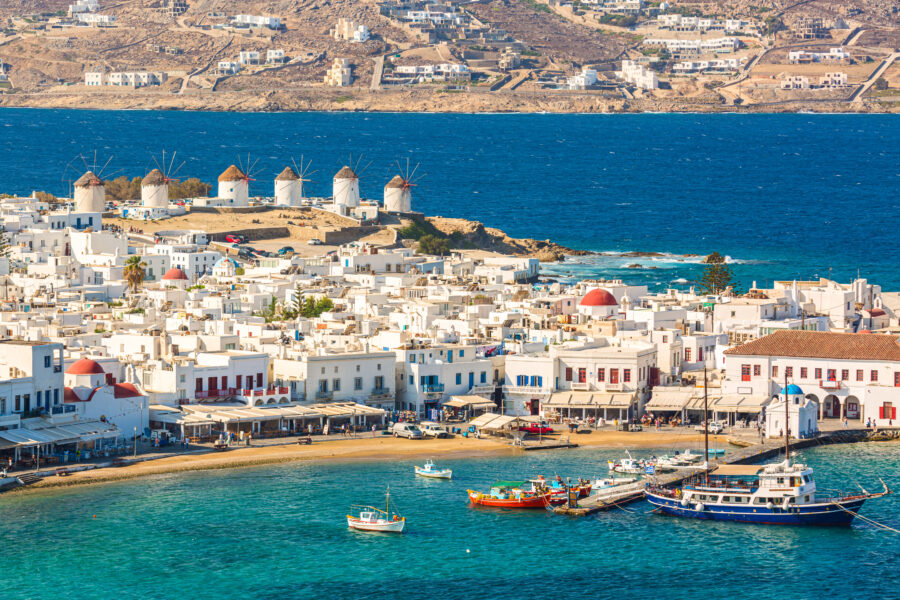
Mykonos’s boutique luxury hotels blend traditional Cycladic architecture with modern amenities. The island boasts several five-star properties overlooking the Aegean Sea with infinity pools and private beaches. Many luxury accommodations in Mykonos are concentrated around Psarou and Ornos beaches, offering exclusive settings with stunning views.
Ibiza competes with impressive luxury options like the Ushuaïa Ibiza Beach Hotel, famous for hosting world-class DJs and poolside parties. The island’s upscale resorts often feature extensive spa facilities and multiple restaurants.
Most luxury hotels in Ibiza tend to be larger than their Mykonos counterparts and frequently include entertainment complexes. Both islands charge premium rates during peak season (June-September), with Mykonos typically commanding higher prices for comparable luxury accommodations.
Budget-Friendly Stays
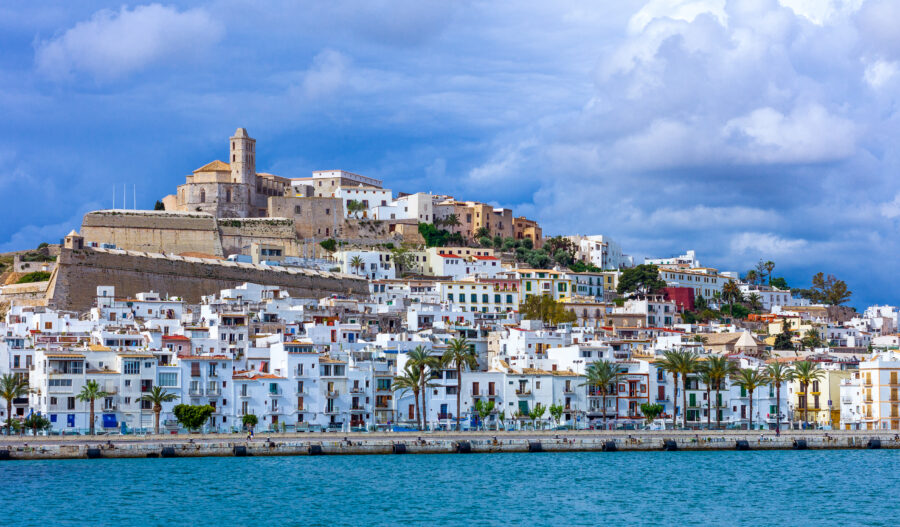
Ibiza offers more options for budget travelers than Mykonos. The Spanish island has numerous hostels, guesthouses, and affordable hotels, particularly in San Antonio and Ibiza Town. Budget options often start around €50-80 per night in shoulder seasons.
You can find small, family-run hotels away from the main party areas that provide clean, basic accommodations for reasonable prices. Many budget travelers in Ibiza also opt for apartment rentals, which can be cost-effective when shared.
Mykonos presents more challenges for budget-conscious visitors. Even basic accommodations tend to start at €100+ per night during summer. Your best bet for affordable stays is to look in villages further from beaches like Ano Mera or visit during May or October when prices drop significantly.
Private Villas and Rentals
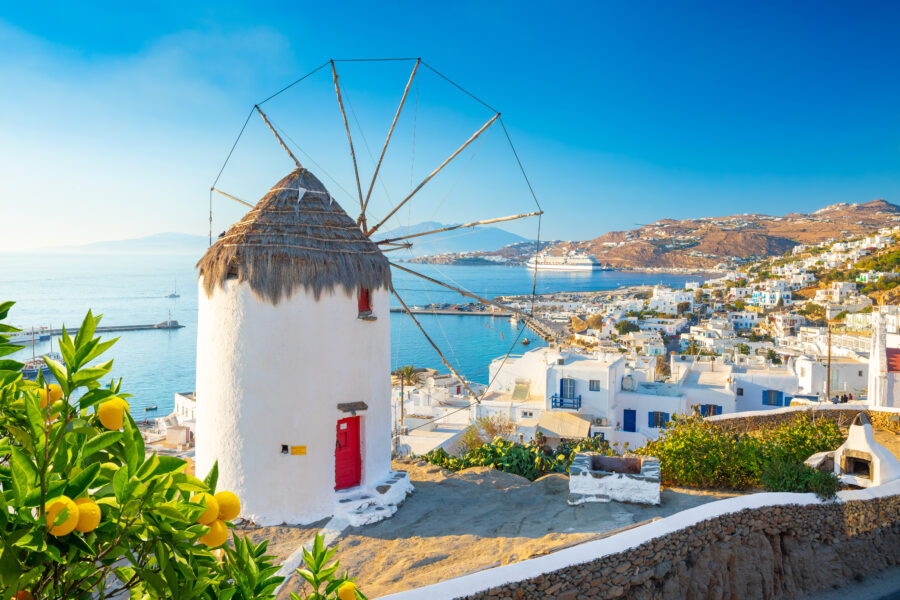
Private villas represent excellent value for groups or families on both islands. Ibiza’s villa market is more developed, with properties ranging from rustic fincas in the countryside to modern beachfront estates. Many include pools, outdoor kitchens, and stunning views.
Mykonos villas exude Grecian charm with their whitewashed walls and blue accents. They often come with dedicated staff and concierge services. The island’s compact size means most rentals are within 15-20 minutes of beaches and nightlife.
Both destinations see villa rentals booked months in advance for summer. Prices vary wildly based on location, size, and amenities.
Expect to pay a premium for properties with sunset views or beach access. Early booking is essential, especially for travel during July and August.
See Related: Corfu vs Mykonos: Which Greek Paradise Matches Your Travel Style?
Beaches and Natural Beauty
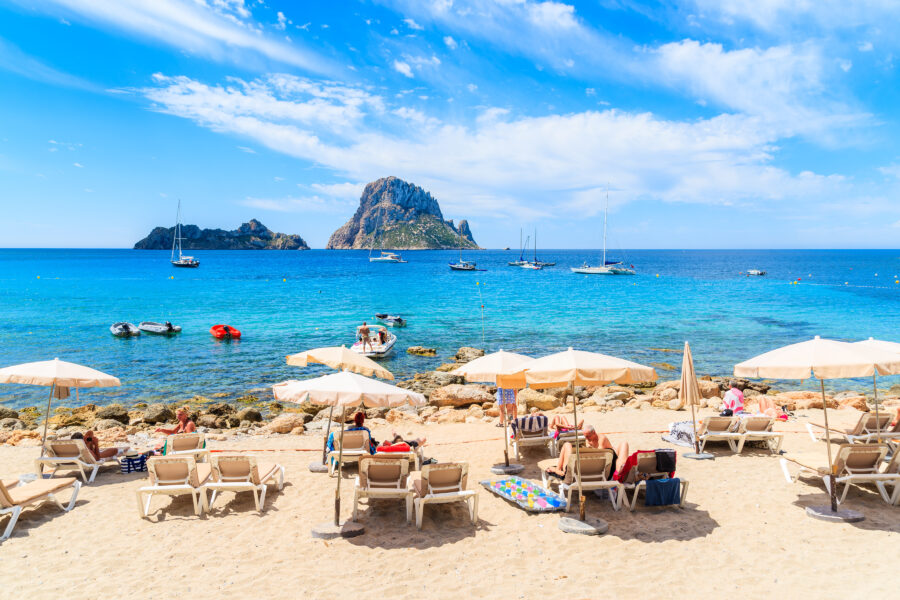
Both islands boast incredible coastlines, offering a distinctly different beach experience. Ibiza tempts visitors with hidden coves and stunning natural landscapes, while Mykonos dazzles with its iconic white sand beaches and crystal-clear waters.
Ibiza’s Secluded Bays

Ibiza’s coastline is dotted with over 80 beaches and coves, many tucked away from the tourist crowds. Cala d’Hort offers breathtaking views of the mysterious Es Vedrà rock formation rising from the sea. It’s a peaceful spot where locals and tourists gather to watch the sunset.
For those seeking tranquility, Cala Salada’s turquoise waters and red cliffs provide a stunning backdrop for relaxation. The beach is surrounded by pine forests, creating a natural paradise.
Playa de Ses Salines attracts a fashionable crowd with its salt flats and long stretches of fine sand. The shallow, clear waters make it perfect for swimming, while beach clubs like Sa Trinxa provide laid-back vibes with quality music.
Mykonos’ Famous Beach Parties
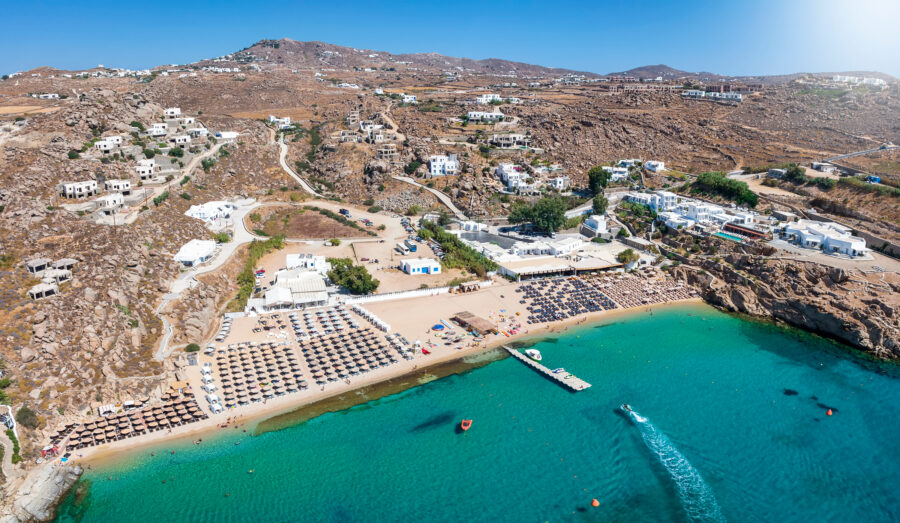
Mykonos beaches are renowned for their vibrant atmosphere and stunning beauty. Paradise Beach hosts some of the Mediterranean’s most famous beach parties. DJs spin tracks while revelers dance from afternoon into night.
Psarou Beach attracts celebrities and the jet set to its luxurious Nammos beach club. The beach features some of the bluest waters you’ll find anywhere, soft sand, and excellent facilities.
Elia Beach, the island’s longest shore, offers a more relaxed vibe while maintaining distinctly Mykonian energy. The water here is clear and perfect for swimming and water sports. Ornos Beach provides a family-friendly option with shallow waters and numerous tavernas serving fresh seafood just steps from the sand.
Natural Attractions and Activities
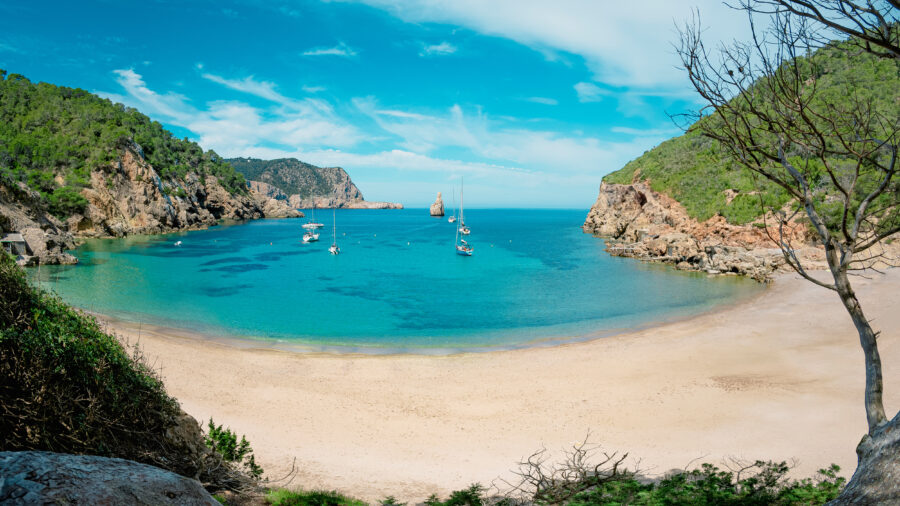
Beyond beaches, Ibiza surprises with lush landscapes. The island’s interior features pine forests, almond groves, and rolling hills perfect for hiking. Es Vedrà, shrouded in myths and legends, is a must-see natural wonder that rises dramatically from the sea.
Water activities thrive on both islands. Ibiza’s Benirràs Beach offers fantastic snorkeling around its rocky coves, while boat trips to Formentera reveal pristine waters often compared to the Caribbean.
While more barren, Mykonos has its natural charm, with iconic windmills dotting the landscape. The island’s rugged terrain creates dramatic viewpoints, especially around the Armenistis Lighthouse.
Both destinations offer excellent water sports, from windsurfing to jet skiing. Ibiza’s protected marine reserves provide exceptional diving for nature lovers, while Mykonos’ clear waters make it perfect for underwater exploration.
Nightlife and Entertainment
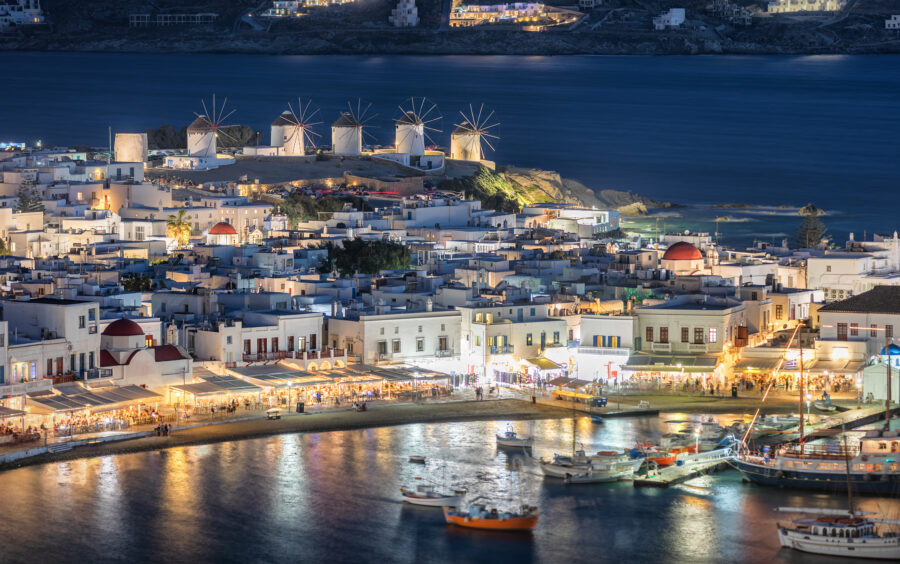
Ibiza and Mykonos are two Mediterranean islands famous for their electric nightlife scenes. Each destination offers unique party experiences that attract visitors worldwide seeking unforgettable summer nights.
World-Class Clubs and DJs

Ibiza reigns supreme when it comes to legendary nightclubs. The island is home to massive venues like Amnesia, Pacha, and Ushuaïa that can hold thousands of partygoers. These superclubs attract the world’s top DJs for season-long residencies every summer.
The Ibiza club experience is more structured and formal. You’ll need to buy tickets in advance (often €50-80), and shows typically start late and continue until sunrise. The focus is heavily on electronic dance music (EDM), and the production value is extraordinary.
Mykonos offers a different clubbing vibe. The clubs are smaller and more intimate, with a lounge-style atmosphere at popular spots like Scorpios and Cavo Paradiso. The island’s venues blend seamlessly with beach parties and daytime entertainment.
Cover charges in Mykonos tend to be lower than in Ibiza, but drink prices can be equally steep. The music scene is more diverse, featuring commercial hits alongside electronic music.
Local Festivals and Events
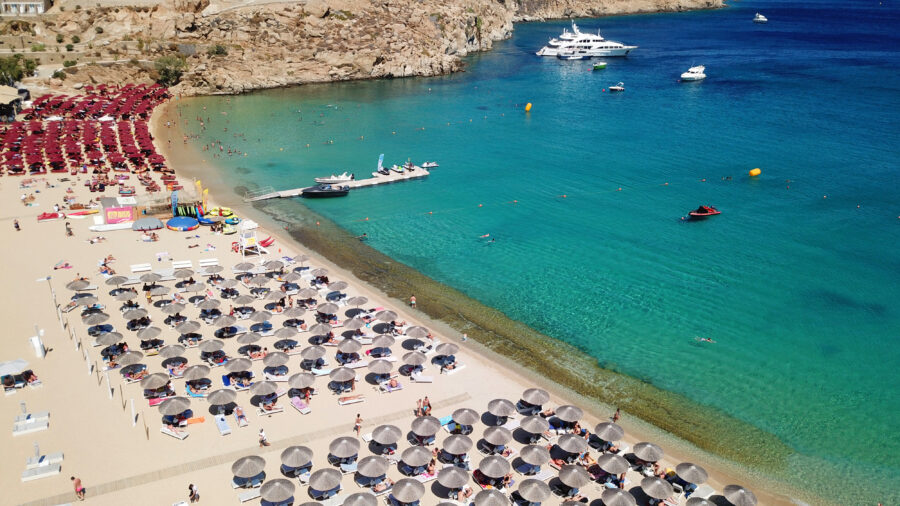
Ibiza’s calendar is packed with special events throughout the summer season. Opening and closing parties at major clubs are massive celebrations that draw huge crowds. The island also hosts unique events like Circoloco at DC10 and elrow parties, which are known for their theatrical themes.
Boat parties are popular in Ibiza waters, with companies like Pukka Up offering daytime cruises that lead into evening club events. These floating festivals create unforgettable experiences on the Mediterranean.
Mykonos celebrates several Greek festivals that add cultural flair to its party scene. During peak season, the island hosts exclusive fashion events and private parties for celebrities and the ultra-wealthy.
Beach parties in Mykonos are legendary, especially at Paradise and Super Paradise beaches. These day-to-night events offer a casual alternative to formal clubbing, featuring quality music and lively atmospheres.
Bar and Restaurant Scene
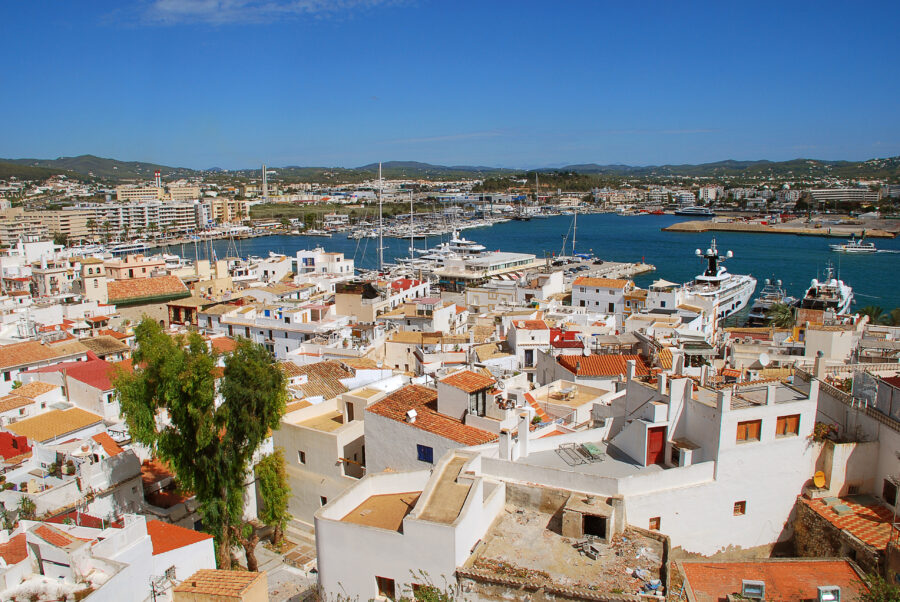
Ibiza’s bar scene extends beyond the clubs, offering vibrant options in areas like San Antonio and Ibiza Town. Café Mambo and Café del Mar are famous for their stunning sunset views, which are accompanied by DJ sets. These spots serve as perfect pre-club venues.
The island’s restaurant scene has evolved dramatically, featuring high-end dining experiences like Sublimotion and Lío, where dinner transforms into entertainment with performances and music.
Mykonos shines with its stylish beach clubs, which blur the line between restaurants and party venues. Nammos and Principote offer luxurious daytime experiences, where long lunches evolve into afternoon parties.
The bar scene in Mykonos Town (especially in the Little Venice area) is charming and vibrant. Small bars spill out onto narrow streets, creating a more intimate and spontaneous nightlife experience than Ibiza’s more structured scene.
Tables at popular spots on both islands require early reservations during high season. The atmosphere is undeniably glamorous, with beautiful people, celebrity sightings, and plenty of champagne flowing.
See Related: Santorini vs Mykonos: Which Iconic Greek Paradise Best Fits Your Travel Style
Cuisine and Dining Experiences
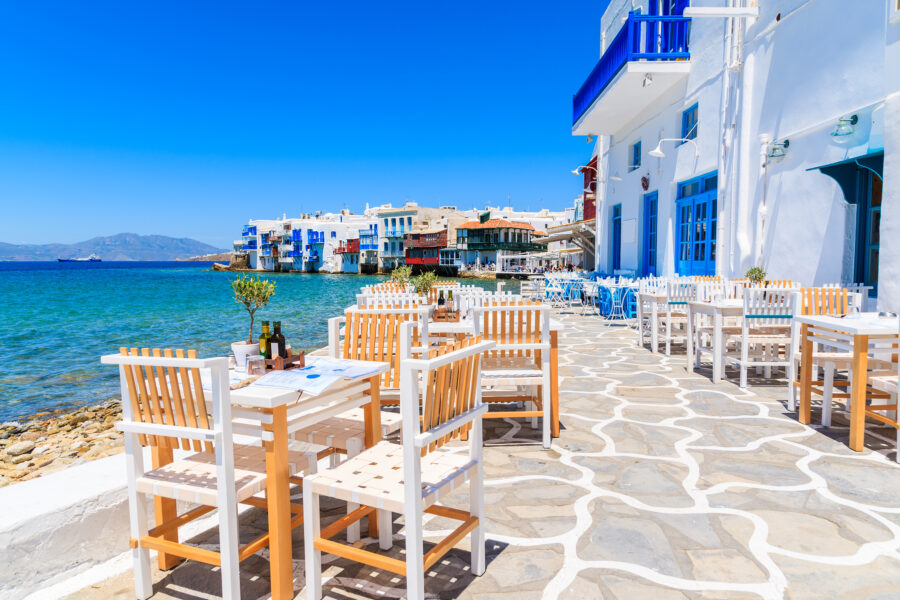
Ibiza and Mykonos offer incredible culinary scenes reflecting their unique cultural heritage and local ingredients. Food lovers will find distinct flavors and dining atmospheres on each island.
Local Delicacies and Dishes
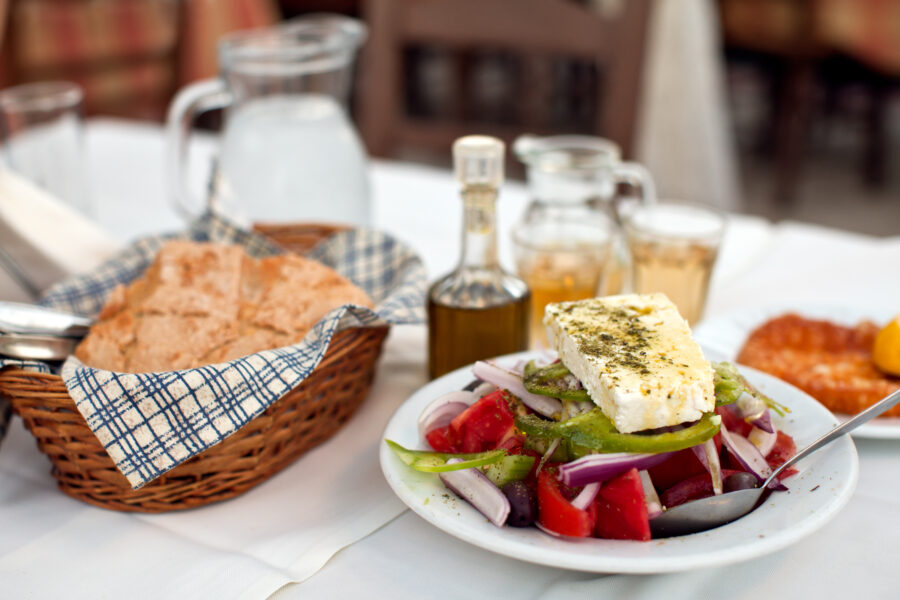
Ibiza’s cuisine showcases a wonderful blend of Mediterranean influences with distinctly Spanish touches. The island is famous for “bullit de peix,” a flavorful fish stew typically followed by rice cooked in the fish broth. Another must-try is “sofrit pagès,” a hearty meat dish with potatoes and spices that reflects the island’s farming traditions.
Mykonos serves up classic Greek cuisine with a focus on fresh seafood. Visitors should sample “louza,” a local cured pork seasoned with spices, and “kopanisti,” a spicy cheese spread unique to the Cyclades. Fresh grilled octopus is available at most tavernas, often served with olive oil and lemon drizzle.
Both islands use locally produced olive oil in almost everything. The difference lies in the herbs and spices – Ibiza leans toward saffron and paprika, while Mykonos dishes feature oregano and lemon.
Fine Dining and Gourmet Restaurants
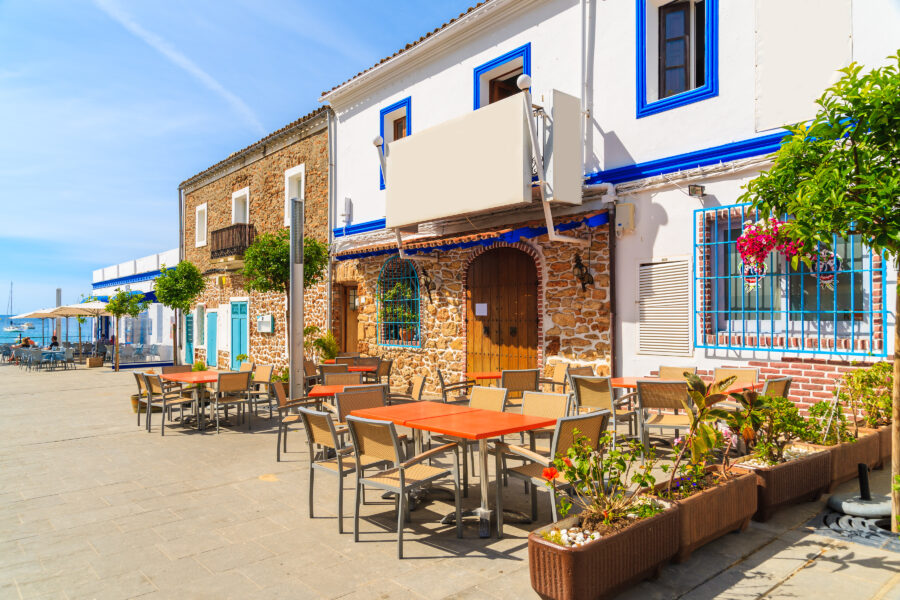
Ibiza has evolved into a serious culinary destination with several Michelin-starred restaurants. Places like La Gaia and Es Tragón offer innovative takes on Ibizan cuisine with spectacular presentation. Beachfront restaurants like Amante and El Chiringuito combine stunning views with high-end dining experiences.
Mykonos matches this luxury offering with upscale establishments like Interni and Nammos. These hotspots blend traditional Greek flavors with international techniques. Many restaurants feature dramatic seaside settings with whitewashed décor and blue accents reflecting the island’s aesthetic.
The dining scenes differ in style – Ibiza tends toward modern fusion concepts while Mykonos restaurants often emphasize authentic Greek recipes with contemporary presentation. Both islands have embraced farm-to-table philosophies, though Mykonos places more emphasis on seafood sustainability.
Food Markets and Street Eats

Ibiza’s Mercado Viejo (Old Market) in Ibiza Town offers a sensory feast with local produce, cheeses, and cured meats. Street food options include “flao,” a mint-flavored cheesecake, and “orelletes,” sweet anise-flavored pastries that make perfect snacks while exploring.
In Mykonos, the town’s small but vibrant food market provides fresh ingredients and local specialties. Street food gems include “gyros” wraps and “souvlaki” skewers from small storefronts throughout the island. Don’t miss “loukoumades” – honey-soaked dough balls that satisfy any sweet tooth.
Both islands have growing food truck scenes. Ibiza’s mobile vendors often serve international cuisine with Spanish twists, while Mykonos food trucks typically focus on Greek classics with creative modern spins. These options provide delicious alternatives to pricier restaurants for budget-conscious travelers while delivering authentic flavors.
Traveling and Transportation

Getting around these Mediterranean party islands requires different strategies. Ibiza’s larger size and established infrastructure contrast with Mykonos’ compact charm and vehicle restrictions in certain areas.
Local Transit Options
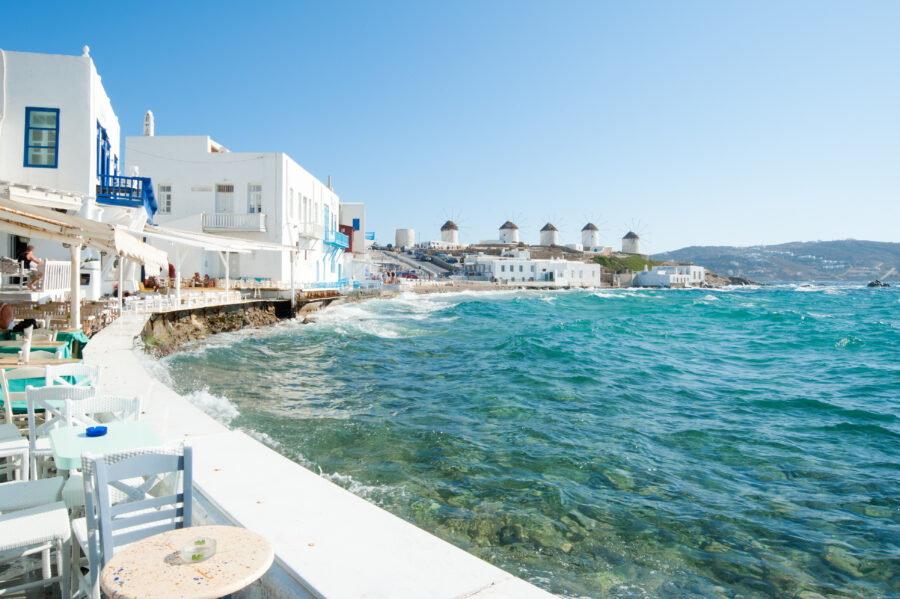
Ibiza offers a well-developed bus network connecting major towns and beaches. Buses run frequently during summer, making traveling between San Antonio, Ibiza Town, and popular beaches easy. Tickets are relatively affordable at €1.65-€4 per journey, depending on distance.
Mykonos has a simpler bus system with routes from Mykonos Town (Chora) to beaches and villages. Buses can get extremely crowded during peak season. The main station is in Fabrika, and tickets cost about €1.80-€2.40 per ride.
Taxis are available on both islands, but can be hard to find during busy periods. In Mykonos, water taxis connect some beaches, offering a scenic alternative to land travel.
Car and Scooter Rentals
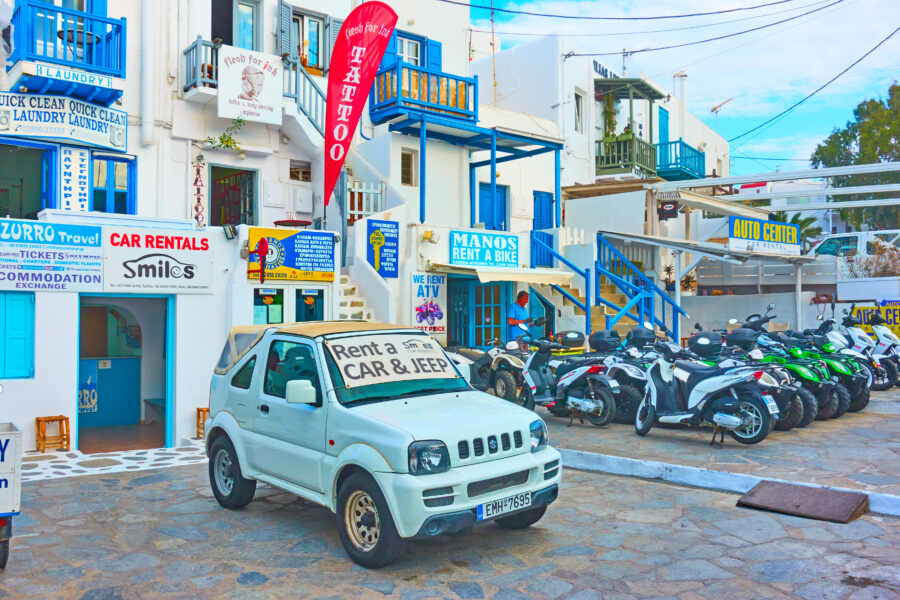
Renting vehicles gives you the freedom to explore at your own pace. Ibiza’s larger size almost demands a rental car if you want to discover hidden coves and inland villages.
Book through reputable companies to avoid scams. Expect to pay €30-€70 daily for cars and €15-€25 for scooters.
Mykonos is smaller, making scooters and ATVs popular options. The narrow roads and limited parking in Mykonos Town can make driving challenging. Rental prices are higher than in Ibiza, with cars starting at €40-€80 daily.
Both islands require an international driving permit alongside your regular license. Roads can be winding and demanding, especially after dark.
Private Jet and Yacht Services

Both destinations offer premium transportation options for luxury travelers. Ibiza’s international airport attracts a steady stream of private jets, with dedicated VIP terminals. Charter prices from major European cities like Rome start around €8,000-€15,000 one-way.
Mykonos has seen increased private aviation traffic in recent years. The Greek island’s smaller airport handles private jets, though it has fewer facilities than Ibiza.
Yacht charters represent the ultimate way to experience both islands. Ibiza’s marinas accommodate more vessels, and daily charter rates for smaller boats start from €1,500.
Mykonos offers similar services but with fewer berths available. Booking exclusive yacht tours in advance is essential during peak season. Private transfers from airports to accommodations are readily available on both islands, providing seamless arrivals for luxury travelers.
See Related: Top Luxury Resorts in Greece: Unforgettable Mediterranean Escapes Await
Frequently Asked Questions
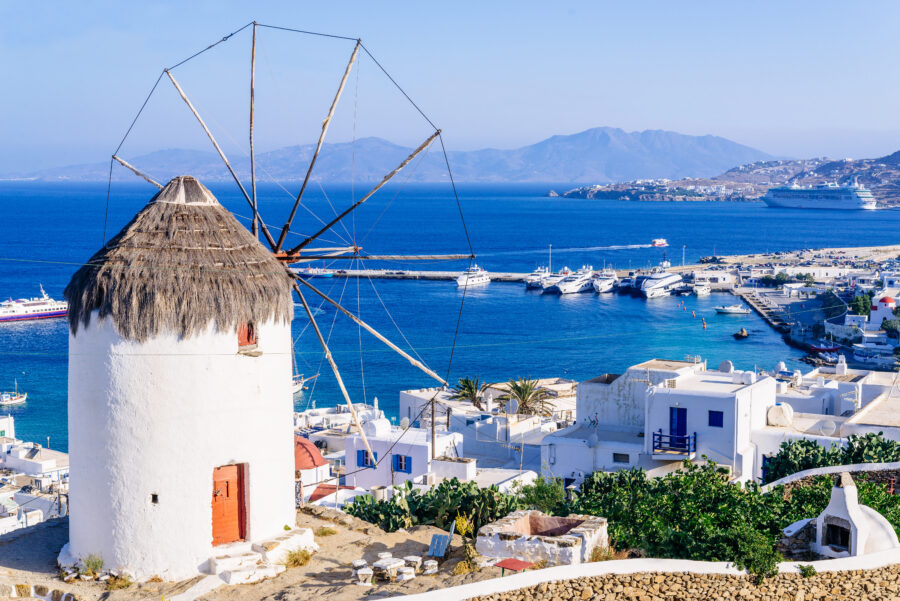
Before booking their Mediterranean getaway, travelers often wonder about specific differences between Ibiza and Mykonos. Both islands offer unique experiences that cater to different preferences and travel styles.
Which island is better for a couple’s getaway, Ibiza or Mykonos?
For couples seeking romance, Mykonos often edges out Ibiza. The intimate boutique atmosphere and picturesque white-washed buildings create a more romantic setting.
Mykonos offers secluded beaches and charming restaurants perfect for intimate dinners. The sunset views from Little Venice provide an especially romantic backdrop.
Ibiza can also be romantic, particularly in its quieter northern region. Areas like Santa Eulalia and Portinatx offer peaceful beaches and stunning natural beauty without the party crowds.
How does the cost of living compare between Ibiza and Mykonos?
Both islands rank among Europe’s more expensive destinations, but Mykonos typically costs more than Ibiza. Accommodations, dining, and beach clubs in Mykonos often come with premium price tags.
Expect to pay more for exclusive beach clubs and restaurants in Mykonos. A sunbed reservation at popular beaches can cost €50-100 daily.
Ibiza offers more variety in pricing, with options for budget travelers in areas away from the leading clubs and beaches. Food and accommodation costs can be 15-20% lower than in Mykonos.
Can you rank Ibiza, Mykonos, and St Tropez in terms of tourist expenses?
St Tropez typically ranks as the most expensive of the three, followed by Mykonos, with Ibiza relatively more affordable. St Tropez’s luxury reputation attracts a wealthy clientele, driving prices higher.
Mykonos takes second place, with its boutique hotels and exclusive beach clubs commanding premium prices. A typical day out in Mykonos can easily cost €200-300 per person.
Ibiza offers the most diverse pricing options. While VIP tables at major clubs can cost thousands, the island also provides more moderate alternatives for dining and entertainment.
Apart from Ibiza, which Greek islands offer a vibrant party scene similar to Mykonos?
Ios is Greece’s second party capital after Mykonos. Its beach parties and bar-hopping culture attract a younger crowd seeking affordable fun.
Zakynthos (Zante) features the famous Laganas strip with numerous clubs and bars. The island combines beautiful beaches with energetic nightlife at more reasonable prices than Mykonos.
Rhodes, particularly Faliraki, offers a lively party scene that has matured recently. The island balances historical sites with vibrant nightlife options for all types of travelers.
How do Ibiza and Mykonos differ in size and variety of attractions?
Ibiza is significantly larger (571 km²) than Mykonos (85 km²) and offers more diverse landscapes and activities. It features lush green areas, numerous beaches, and historic sites like Dalt Vila.
The size difference means Ibiza provides more varied experiences from quiet villages to busy resorts. Visitors can explore natural parks, hidden coves, and hippie markets beyond the club scene.
Mykonos’ smaller size creates a more concentrated experience. Most attractions are accessible within short drives, but the island offers less geographic diversity with its characteristic barren landscape dotted with large boulders.
Ibiza’s nightlife is more expansive and diverse. Massive superclubs like Pacha and Amnesia are featured here. The island pioneered electronic music tourism and hosts world-famous DJs at venues that can hold thousands.
Mykonos, on the other hand, offers a more intimate, upscale nightlife experience. Clubs are smaller but equally glamorous, focusing on seeing and being seen. The party often starts earlier, with sunset beach clubs transitioning into nighttime venues.
The social atmosphere differs, too. Ibiza attracts a broader range of ages and backgrounds, while Mykonos draws a more exclusive, fashion-conscious crowd. Ibiza’s parties often continue until morning, while Mykonos generally winds down earlier.

